-
Author
Becky Richards -
Date
21 May 2020
Essay
On Crafting and Coping
I’m writing this from a slumpy couch in the living room of my Mt Eden flat. It’s two weeks into lockdown. Despite drizzly weather, I’ve got the back door latched open, hoping the wind will dissipate a growing sense of cabin fever. Finding words is difficult – my brain seems to be hiding them in cupboards. I’m fighting a compulsion to re-check the Covid updates on The Spinoff, or add to my ridiculous Google search history (have a sniffle – corona symptom?). My gaze keeps drifting over to a nearby trestle table, where I’ve set up a ceramics workspace. A half-formed sculpture, waiting in plastic wrap, invites me to abandon this Word document.
While shaping sentences feels sticky and slow right now, shaping clay is an accessible joy. Not only is it easier to get into mud than language, the time spent squeezing and rolling it alters the quality of my thoughts and how I feel in my body. I rise from the table with an unclenched jaw and increased motivation, feeling both settled and energised. After making, I’m more able to coerce myself out for a jog, sort dinner, reply to emails, or glare at my laptop and tap out these paragraphs.
A glance at social media suggests many of us are finding relief through materials. Each evening I scroll past a tsunami of new projects – knitted, sculpted, woven, thrown, paper-mâchéd, stitched and whittled – an onscreen chorus of rhythms and hands. This tidal wave of lockdown creativity seems to be evidence of an instinctive understanding: crafting helps us cope. Its mood-lifting perks are widely accessible, rapidly effective, and clearly doing great things for collective resilience. But why does making things help us to stay sane and keep going? It’s a good moment to look at the mechanics of this.
When I am very worried, I’m much more capable of using my hands than my mind. I’ve learnt that this is common – it’s how most human brains work. Anxiety impacts cognitive function; our threat detector (the amygdala) overrides our centre for reasoning, imagining and planning (the cortex). This makes it fiendishly difficult to do anything that requires conceptual or systematic thinking, but manual tasks that draw on haptic knowledge may remain accessible, even when a person is stressed.
There’s an accumulative nature to many forms of hand-making, so it’s easy to adjust the scale of the doing. You can knit just three rows of the scarf, pinch out one cup, or sew for ten minutes – this makes it feel far easier to start. If I’m bogged down with low mood, I can say to myself: ‘Just make one tiny thing, really small – that’s enough.’ Sometimes it really is only one small thing (and that’s great), but on other days it turns out to be three, or seven, then maybe something a bit bigger. Pretty soon two hours have passed, and I’m feeling less crummy than before I sat down.
Repetitive, tactile activities can ease the grip of ‘fight, flight or freeze’. Think of hand-stitching, basket weaving or wedging a hunk of clay: the same actions are performed in continuous refrain. They shift awareness to sensations in the body, with predictable rhythms that can help reduce tension. Physical symptoms of stress may fade, and the mind can be distracted from panic-inducing content. Of course, there may be frustrating moments, but even when a project is going badly and I want to toss it across the room, I can still find a reprieve from bigger problems.
Connecting our brain and hands in an ongoing rhythm creates cognitive movement and spaciousness. If we’re stitching, whittling or rolling, we’re no longer frozen, and our looping thought-chatter has a chance to settle. When these actions become automatic, and require minimal concentration, the mind can do some gentle free-roaming.[2] Known as undirected thinking, this is also found in day-dreaming and in those weird, long moments of staring into space.
In neurological terms, these moments engage our ‘default-mode network’, a circuit that connects different areas of the brain – involved in relieving stress, processing experiences and restoring creativity. It’s like the mind’s spinning wait cursor. Our DMN works away at problems when we’ve stopped giving them direct attention, often delivering solutions that seem to arrive out of the blue.[3] To give this a craft context: after knitting part of a cardigan, or coil-building in clay, difficult issues may be seen from a fresh perspective. Periods of easy, repetitive making help give answers time to emerge and new options time to cook. Rather than being acts of avoidance, these types of projects can be instrumental in navigating ways through wider situations.
Hand-knitting can be as complicated as you want it to be. At the moment I’m knitting a cardigan with a basket-weave pattern. It’s slow, repetitive work but there is something satisfying in the process. Completed in a series of parts – a back, front, sleeves, sewing the pieces together…
It’s very tactile, you’re always touching the yarn. There’s something very calming about being able to touch things, enjoy their texture. There’s a simple pleasure in taking the right panel of your cardigan front and smoothing it against the couch or your lap, admiring your achievement.
Often, I will work while watching a movie, or listening to an audio book or podcast, but sometimes the knitting requires all of my attention. I find comfort in it absorbing all of my awareness as few things can hold me in the same way. It can also be a meditative activity to do with my hands while I think. Its flexibility to my mood makes it something I’m drawn to in times of feeling stressed or low. Right now, knitting is an evening activity earned after my day of study, bringing routine and reward to my day.
– Felixe Laing, maker and postgraduate student, Master of Museum and Heritage Practice, based in Wellington
Several years ago, I became obsessed with the Japanese craft of hikaru dorodango (shining mud dumplings). These ‘dumplings’ look like billiard balls, but are made from earth and water. Following instructions found online, I made some lumpy orbs using soil from the garden. The making process is fairly long-winded. Gathered dirt is dried, crushed, sieved, mixed with water, moulded into a ball and then worked for ages with gentle shaking and smoothing actions. Dry earth is continuously sprinkled on the damp sphere, which eventually takes on a dusty appearance. It’s then left to rest, until it can absorb more. My dorodango never got very shiny.
As the core of a project with Dunedin’s Blue Oyster gallery, I invited others to join me in some mud-ball production. Amazingly, more than twenty participants, of varying age and background, showed up on a Sunday to spend five hours handling dirt. During the first half of the workshop, the space hummed with conversation – introductions, laughter, questions. After returning from our lunch break, the collective energy soon shifted. As individuals became more deeply absorbed in their task, less and less was said. A heavy quiet fell, broken only by sandy rhythms of mud-balls in progress.
When our making finished up, there was a marked sense of emergence; a shared widening of awareness. Blinking and stretching, slow movements and speech. The quality of light in the gallery had shifted, the space looked different – where had the last two hours gone? ‘I’m so zoned,’ one young woman said, laughing quietly, her gaze stuck somewhere in the mid-distance. Departures were made gently, and a dazed sense of calm hung around.
What I found significant were the clear shifts of inner state – from scattered attention into sustained, quiet focus, finally opening outwards to a slower, softer experience of our surroundings. While the depth and length of concentration varied from person to person, these transitions affected everyone present. As Professor of Design Daniel Charny comments:
all makers participate in the unique human experience that comes from being completely engrossed in creative activity. Being ‘in the zone’ is felt by a four-year-old as much as by a seasoned master.[4]
Such deep absorption is also known by the fancier term ‘state of flow’, coined by Hungarian psychologist Mihaly Csikszentmihalyi back in 1975. ‘Flow’ happens when you’re totally (and pleasurably) immersed in doing something, with no spare awareness for anything else, including the movement of time.[5]
Despite the term’s capture by the field of elite sport and those seeking ‘peak’ performance, this state is found in many areas of life, and often seen in children when they’re lost in play. As Daniel Charny notes, it’s something innate, not acquired, and has a strong connection to creative pursuits. Finding flow doesn’t require any specialised skills or expensive equipment. It can be entered through projects you personally find captivating; ones that are challenging enough to demand full concentration, but not so difficult they feel out of reach. As we found at Blue Oyster, it’s even possible to achieve using only dirt and water.
Flow states have been shown to produce impressive amounts of dopamine and endorphins – those feel-good chemicals that boost focus, motivation and calm satisfaction.[6] Post-making, flow may even leave behind a quality of relaxation similar to that found through meditating or a full-on yoga class – evident in the slow, blissed-out feeling that followed our dorodango sessions.
Getting deep into a project can also provide respite from the sheer relentlessness of life. When awareness is entirely occupied by action, our sense of self (and all accompanying struggle) gets temporarily ushered offstage. Losing oneself in making something – being ‘in the zone’, even briefly – can serve as a pit-stop, providing time-out from external or internal crises, while topping up resources that make it easier to cope.
I know that it’s good for me, that I feel better when I make something, that it’s exciting to formulate thoughts and learn more about them by physically trying things out… acts of art-making bring me back to my body. They have some vitality I am energised by, that stays longer than a meal.
We’ve talked a bit together about the sensory aspects of making art – particularly with clay. It’s fun and satisfying to build something! And to see or be part of some transformation. I like to see the clay change from wet to dry to strong. I like to see disconnected things get linked up, and to be a part of the linking.
– Jordan Davey-Emms, maker and gallery staff member, based in Whakatāne
Many of these benefits can be found through other means, but making things with your hands has an extra mood-lifting edge, centred on the palpable transformations involved. In the late 1990s, neuroscientist Kelly Lambert found that our brains are hard-wired to respond positively when our physical efforts bear tangible results. She dubbed this the ‘effort-driven rewards circuit’.
What revs up the crucial effort-driven rewards circuit – the fuel, if you will – is generated by doing certain types of physical activities, especially ones that involve your hands. It’s important that these actions produce a result you can see, feel, and touch, such as knitting a sweater or tending a garden.[7]
Lambert frames this circuit as an evolutionary tool – it gave us incentive to keep doing the things that ensured survival. Making the fire, sourcing the food. She suggests a reduced activation of this built-in response contributes greatly to the staggering rise of depression and anxiety. In the privilege of a comfortable, contemporary life, achieving changes by hand may appear largely optional, but those actions provide something essential for us to feel human.
Although wheel-throwing a bowl or knitting a cardigan aren’t tasks that directly keep us alive, the same neural pathways are engaged, producing a deep sense of satisfaction.[8] Through crafting a spoon, or an earring, or an abstract sculpture from egg-cartons (if that’s meaningful for you), our hands can conjure up a surge in well-being. Goal-oriented tasks that involve materials and our body – not just our mind – offer a full, well-rounded experience. They fire up much more of our internal circuitry than thinking on its own or working via digital interfaces; we’re clearly designed to operate in three dimensions.
Right now, life feels more flattened by screen time than ever – the Zoom meetings, Skype hang-outs and increased demand for web content. For some of us, this is emphasising a need to actually touch things – to access the nourishment held in textures, and balance out the drain of those frictionless, digital hours. The damp squishiness of clay, or the soft strength of wool – there’s such rich vitality in the tactile aspects of making.
And when so much is happening outside our control, bringing new objects into being (however wobbly or simple) can be a radically empowering act. Transforming raw materials into something helps us feel capable and able to influence our surrounding environment. It’s a graspable reminder of our ability to make stuff happen, which reaches beyond our creative pursuits. Anthropologist Daniel Miller sums it up neatly:
All you need to do is to remind yourself that producing things is one of the most effective means for the realisation of the person, for seeing one’s own capacity in the evidence of the things we have ourselves created.[9]
As I look across the living room at my wonky, hand-built sculptures, my worries about the post-pandemic future seem a tiny bit smaller. Having a making practice lets me feel more able to shape and re-shape things. Mud, moods, a way of being in the world. Maybe this sounds idealistic (and cheesy), so I don’t expect you to be convinced by my claims. The felt benefits of making can’t be fully understood through other people’s stories, or the underlying science. It’s the kind of knowledge that comes out of doing. So please, if you haven’t already, test it out – make and see.
--
[1] Catherine M. Pittman and Elizabeth M. Karle, Rewire Your Anxious Brain: How to Use the Neuroscience of Fear to End Anxiety, Panic, and Worry, Raincoast Books, Canada, 2015, p. 25.
[2] Rosemary Davidson and Arzu Tahsin, Craftfulness, Quercus Editions Ltd UK, 2018, p. 47.
[3] Alex Soojung-Kim Pang, Rest: Why You Get More Done When You Work Less, Penguin UK, 2016, p. 44.
[4] Daniel Charny (ed.), The Power of Making: The Importance of Being Skilled, V&A Publishing and the Crafts Council, London, 2011, p. 7.
[5] Mihaly Csikszentmihalyi, Flow: The Psychology of Happiness, Random House, 2002, p. 71.
[6] Steven Kotler, The Rise of Superman: Decoding the Science of Ultimate Human Performance, Quercus Editions Ltd UK, 2014, pp. 66, 67.
[7] Kelly Lambert, Lifting Depression: A Neuroscientist’s Hands-on Approach to Activating Your Brains Healing Power, Hachette UK, 2010, p. 7.
[8] Davidson and Tahsin, Craftfulness, p. 30.
[9] Daniel Miller, ‘The Power of Making’, in Charny (ed.), The Power of Making, p. 27.
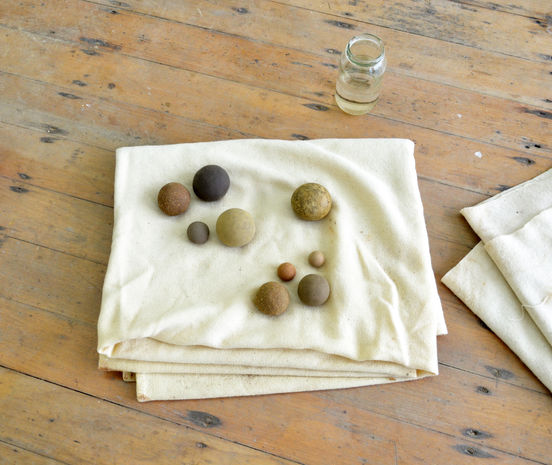
Becky Richards, To watch, with your mind’s eye, the world floating quiet, 2017, Blue Oyster exhibition
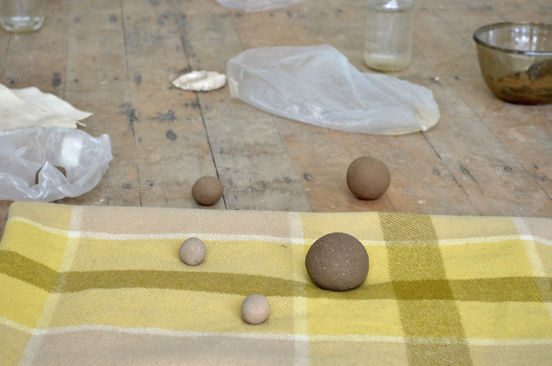
Becky Richards, Mud-ball production workshop, To watch, with your mind’s eye, the world floating quiet, 2017, Blue Oyster
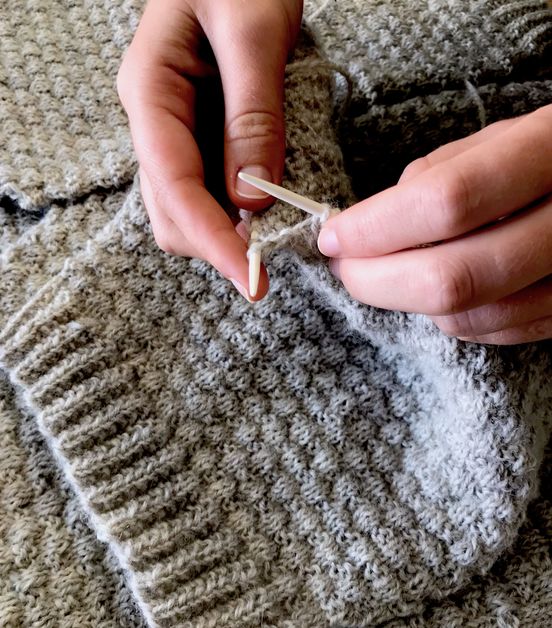
Felixe Laing, maker and postgraduate student, knitting
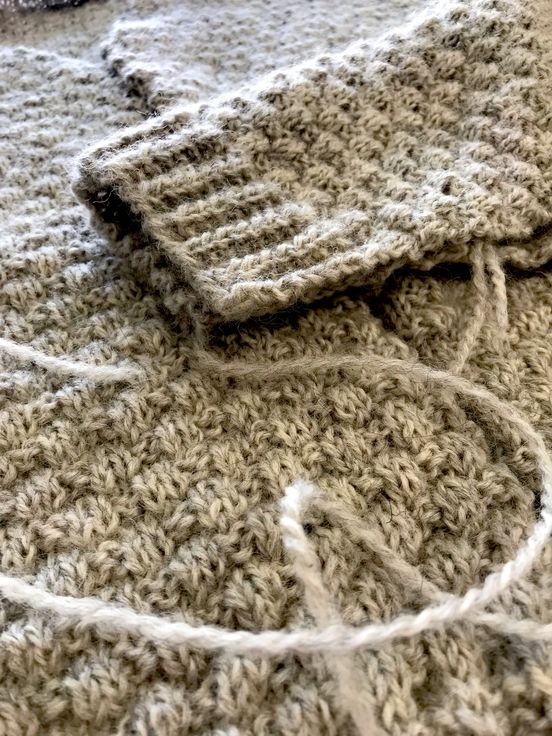
Felixe Laing, maker and postgraduate student, knitting
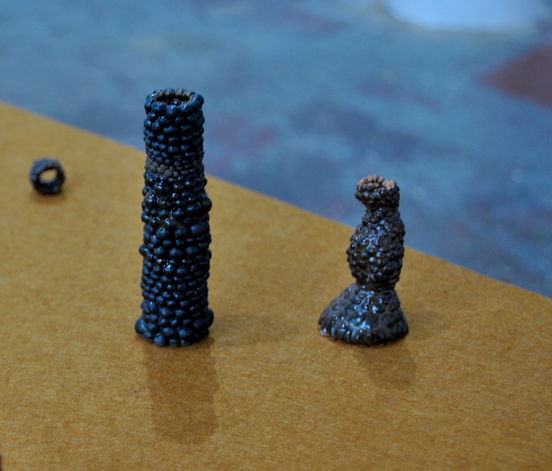
Jordan Davey-Emms, maker and gallery staff member
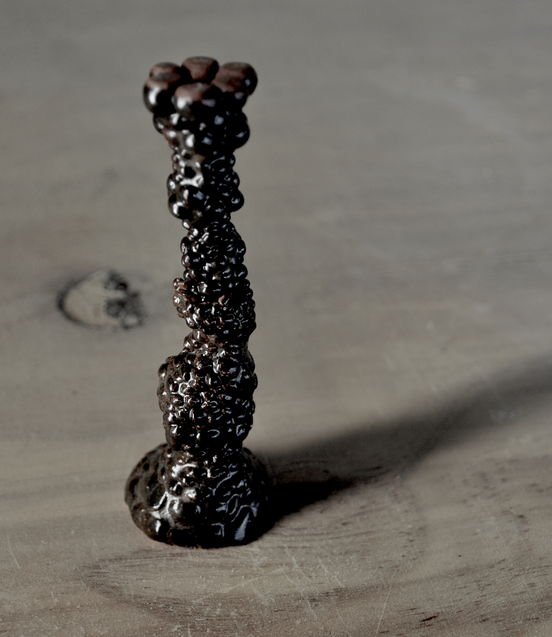
Jordan Davey-Emms' tower figure